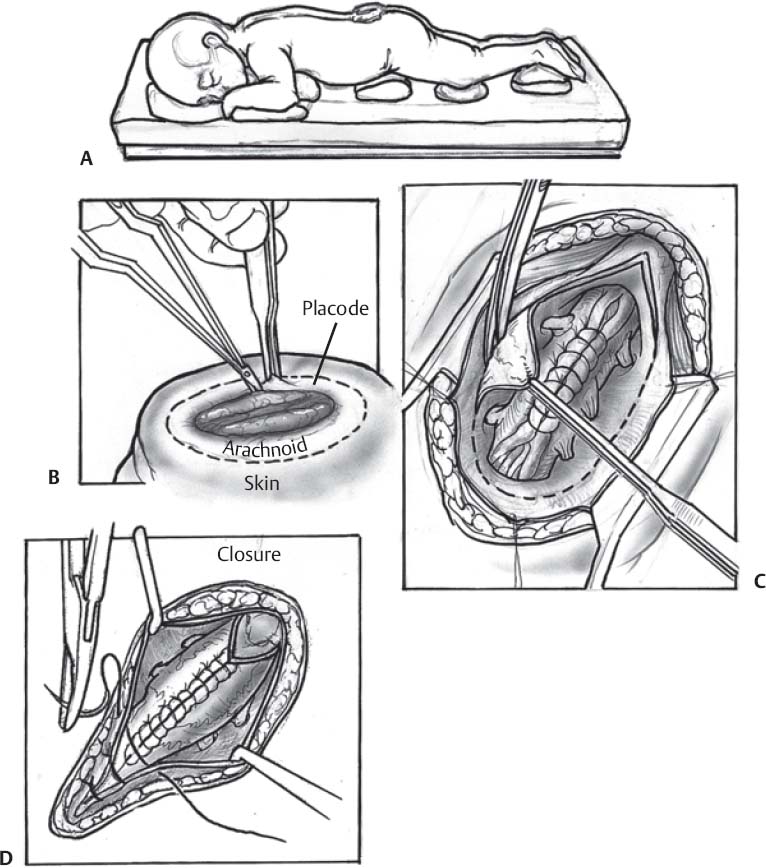♦ Preoperative
Operative Planning
- Appropriate counseling and parent/family teaching
- Discuss neurologic prognosis
- Discuss hydrocephalus, Chiari II malformation, and other comorbidities
- Discuss neurologic prognosis
- In utero ultrasound/magnetic resonance imaging helpful but not mandatory
- Delivery by caesarian section
- Nursing education
- Cover defect with sterile gauze
- Maintain latex precautions
- Keep infant prone
- Cover defect with sterile gauze
- Repair within 24 to 72 hours
- Neurologic assessment
- Systemic assessment for other congenital anomalies
- Cranial, renal ultrasound
- Echocardiogram
- Chest/spinal x-rays
- Cranial, renal ultrasound
- Pediatric, orthopedic, and urologic consultations when early comorbidities present
Special Equipment
- Spinal tray
- Plastics tray
- Jeweler’s bipolar
Anesthetic Issues
- Latex allergy precautions
- Intubate patient supine with neural placode protected from compression using foam donut
- Intravenous antibiotics, Foley catheter, heat lamps
♦ Intraoperative
Positioning (Fig. 159.1A)
- Prone, transverse rolls tailored to patient to allow abdomen to hang free
- Check pressure points: eyes, arms, genitals, knees, and feet
Planning of Preparation and Drape
- Wide preparation to encompass whole back in case of need for flap closure
- Prep skin, not placode
< div class='tao-gold-member'>Only gold members can continue reading. Log In or Register to continue
Stay updated, free articles. Join our Telegram channel

Full access? Get Clinical Tree








